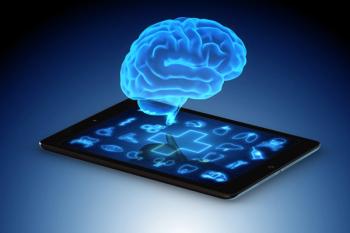
DTx and Cognitive Behavioral Therapy: Opportunities, Benefits, and Challenges of an Evolving Landscape
Why are mental health digital therapeutics primarily based on CBT?
Around the world, 5 billion individuals have mobile devices, half of which are
Although care access is a key issue that digital solutions can improve, DTx also create an opportunity for genuine innovation. In fact, DTx are not necessarily diluted versions of in-person psychotherapy. Rather, in some cases they give rise to a mechanism of action enabled by the digital medium itself. For example, Akili’s EndeavorRx uses video game dynamics to train attentional processes in an intervention for children with attention-deficit/hyperactivity disorder. Omada Health delivers a digital version of the evidence-based Diabetes Prevention Program because it is a lifestyle intervention, including a support component enabled by technology and weight monitoring through connected devices. Pear Therapeutics’ reSET and reSET-O are prescription DTx for substance use disorder and opioid use disorder, respectively, intended to provide cognitive behavioral therapy (CBT) as an adjunct to outpatient treatment.
Innovations, however, are not good simply because they exist. Clinicians will need to carefully and thoughtfully consider different DTx offerings, their claimed mechanisms of action, evidence for their efficacy and ease of use, and other relative strengths and weaknesses.
Why Are Mental Health DTx Primarily Based on CBT?
CBT lends itself to digitization because the way in which individuals interact with their devices—and the devices’ ubiquitous presence—matches, and even facilitates, the core principles of change that underpin the therapy. Hence, most DTx assert that they are based on CBT.
However, in order to claim theoretical foundations in CBT, an intervention must promote behavioral adaptation through
These 3 principles all have in common the need to draw awareness to, record, and evaluate how the patient experiences and interacts with the world. In this model, anything that facilitates these practices in an ecologically valid way may amplify their therapeutic effect. The therapeutic relationship in CBT is characterized by collaborative empiricism, wherein the therapist encourages symptom self-monitoring with a view to constructing experiments and opportunities to challenge one’s world view. In traditional therapist-delivered CBT, data have shown that the more a patient adheres to these tasks between sessions, the better their
The overall contribution of these 3 foundational CBT principles to the treatment of an individual will depend on that individual and the issues with which they present. Some patients will have more insight or self-awareness of their emotional state or of their negative automatic thoughts and, therefore, may need to work less on attention change. Similarly, a patient with a specific phobia may need to work more on context engagement, using exposure techniques to relearn and diffuse previously learned negative associations. An experienced CBT therapist will make these modifications instinctively. Although the earlier waves of digital CBT were mostly one-size-fits-all applications, more recent digital solutions can include an innumerable number of skills and techniques from several therapeutic approaches (ie, CBT, interpersonal therapy, and dialectical behavior therapy) and adaptively meet patients where they are clinically.
Opportunities and Benefits of DTx
As artificial intelligence (AI) and machine learning (ML) technology advances, DTx have an opportunity to grow beyond limited and inflexible content streams and become responsive to the patient’s present emotional state and circumstances (Sidebar). This is especially important, because maintaining user engagement over time proves challenging for many DTx. One approach is to use a relational agent, which is a specialized type of chatbot purpose-built to replicate some of the unique traits and dynamics of human interpersonal relationships. One such chatbot—Woebot—demonstrated Working Alliance Inventory – Short Revised scores comparable with those reported in the literature for traditional outpatient individual and group CBT. These results demonstrate that DTx can establish a
Additionally, research has shown that individuals are more willing to disclose personal information to a virtual human, as doing so lowers fear of self-disclosure and impression management.10 This may be particularly important in adolescents, who prefer online or mobile tools over face-to-face interactions and tend to fear the stigma associated with seeking traditional mental health services.11 DTx have even been successfully deployed as an adjunctive treatment in challenging populations such as patients with early psychosis.12
The Importance of Regulation
Perhaps unsurprisingly, the world is inundated by an ever-growing number of DTx—mostly in the form of mental health apps—that make broadly similar claims. However, few of these have chosen the path of clinical validation and regulatory approval. Many have no intention to pursue a regulated pathway given the time and cost involved. Just because a DTx app is available on Google Play and the App Store does not mean that any of its claims are valid. More importantly, a poorly designed app could be unhelpful, or even harmful.
Regulation of DTx brings rigor in terms of clinical efficacy, risk, and safety, as well as to the DTx development process. This is critical as many DTx rely on AI and ML algorithms that must be rigorously, accurately, and fairly trained and tested on clinically validated datasets. Results of such analyses must also be clearly and transparently reported.13 The US Food and Drug Administration has recently proposed a regulatory action plan that would encompass the entire life cycle of software as a medical device, an acknowledgment that AI and ML models often need regular updating, retraining, and retesting to ensure
Challenges Ahead
Every new treatment modality carries unique difficulties. For example, identification of safety events (ie, suicidal or homicidal ideation, intent, or plan) is a particular challenge for DTx utilizing relational agents where there is no human continuously monitoring interactions. Since DTx allow for 24/7 access and virtual support, they will need to detect crises accurately and provide appropriate assistance. As such, mental health DTx can be seen as a way of augmenting and enhancing rather than replacing human-to-human care delivery.
Any new technology-based treatment should incorporate the needs of all stakeholders and consider the digital divide that could prevent access to those who may most benefit from DTx. Further, despite the fact that prescription-based DTx have been developed from psychological and behavioral sciences, clinical psychologists and their associated professions will not be in a position to prescribe them.15 These concerns are certainly not new to mental health care, but the incorporation of a new technological approach necessitates a nuanced evolution of how we think about and address them as a profession.
Guidance for Clinicians
When faced with the prospect of recommending DTx to patients, clinicians may struggle to make sense of the seemingly unending parade of options, with widely varying degrees of quality and clinical validity. Several websites offer expert reviews of DTx apps, but these reviews do not always incorporate the essential voice of the patient (
Because many DTx solutions rely on CBT principles, a multidisciplinary approach can be useful. For instance, a psychiatrist considering a DTx app can seek input from clinical psychologist colleagues. Fundamentally, one must exercise common-sense clinical judgment when considering DTx. Are the claims made by the app feasible? Do you envision your patients being able to use and benefit from it? If possible, give the DTx app a test drive before recommending it.
DTx offer unique benefits for meeting patients where they are. However, they must be continually tested, validated, and tried in the real world if they are to become part of a comprehensive system of care that helps us improve mental health across the lifespan.
Dr Darcy is a clinical research psychologist, an adjunct faculty member in the Department of Psychiatry and Behavioral Sciences at Stanford University School of Medicine, and the founder and president of
References
1. Silver L. Smartphone ownership is growing rapidly around the world, but not always equally. Pew Research Center. February 5, 2019. Accessed June 25, 2021.
2. Mobile fact sheet. Pew Research Center. April 7, 2021. Accessed June 25, 2021.
3. Mennin DS, Ellard KK, Fresco DM, Gross JJ. United we stand: emphasizing commonalities across cognitive-behavioral therapies. Behav Ther. 2013;44(2):234-248.
4. van’t Wout M, Spofford CM, Unger WS, et al. Skin conductance reactivity to standardized virtual reality combat scenes in veterans with PTSD. Appl Psychophysiol Biofeedback. 2017;42(3):209-221.
5. Callan JA, Kazantzis N, Park SY, et al. A propensity score analysis of homework adherence–outcome relations in cognitive behavioral therapy for depression. Behav Ther. 2019;50(2):285-299.
6. Lebeau RT, Davies CD, Culver NC, Craske MG. Homework compliance counts in cognitive-behavioral therapy. Cogn Behav Ther. 2013;42(3):171-179.
7. Riley BJ. The role of homework in exposure-based CBT outcome for problem gambling. Int Gambl Stud. 2015;15(3):394-407.
8. Fitzpatrick KK, Darcy A, Vierhile M. Delivering cognitive behavior therapy to young adults with symptoms of depression and anxiety using a fully automated conversational agent (Woebot): a randomized controlled trial. JMIR Ment Health. 2017;4(2):e19.
9. Darcy A, Daniels J, Salinger D, et al. Evidence of human-level bonds established with a digital conversational agent: cross-sectional, retrospective observational study. JMIR Form Res. 2021;5(5):e27868.
10. Lucas GM, Gratch J, King A, Morency L-P. It’s only a computer: virtual humans increase willingness to disclose. Comput Hum Behav. 2014;37(x):94-100.
11. Kretzschmar K, Tyroll H, Pavarini G, et al. Can your phone be your therapist? Young people’s ethical perspectives on the use of fully automated conversational agents (chatbots) in mental health support. Biomed Inform Insights. 2019;11:1178222619829083.
12. D’Alfonso S, Santesteban-Echarri O, Rice S, et al. Artificial intelligence–assisted online social therapy for youth mental health. Front Psychol. 2017;8:796.
13. Stevens LM, Mortazavi BJ, Deo RC, et al. Recommendations for reporting machine learning analyses in clinical research. Circ Cardiovasc Qual Outcomes. 2020;13(10):e006556.
14. Artificial intelligence and machine learning in software as a medical device. US Food and Drug Administration. Updated January 12, 2021. Accessed June 25, 2021.
15. Carl JR, Jones DJ, Lindhiem OJ, et al. Regulating digital therapeutics for mental health: opportunities, challenges, and the essential role of psychologists. Br J Clin Psychol. Published online March 1, 2021.
Newsletter
Receive trusted psychiatric news, expert analysis, and clinical insights — subscribe today to support your practice and your patients.














